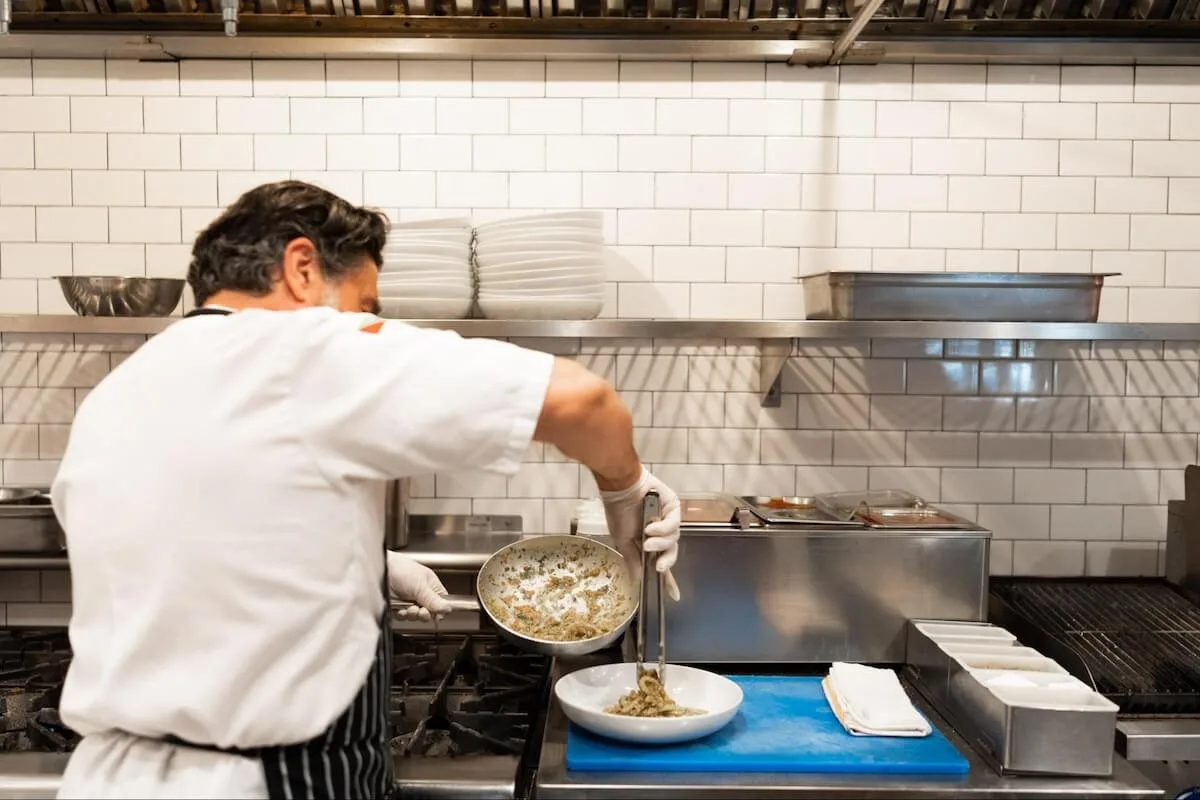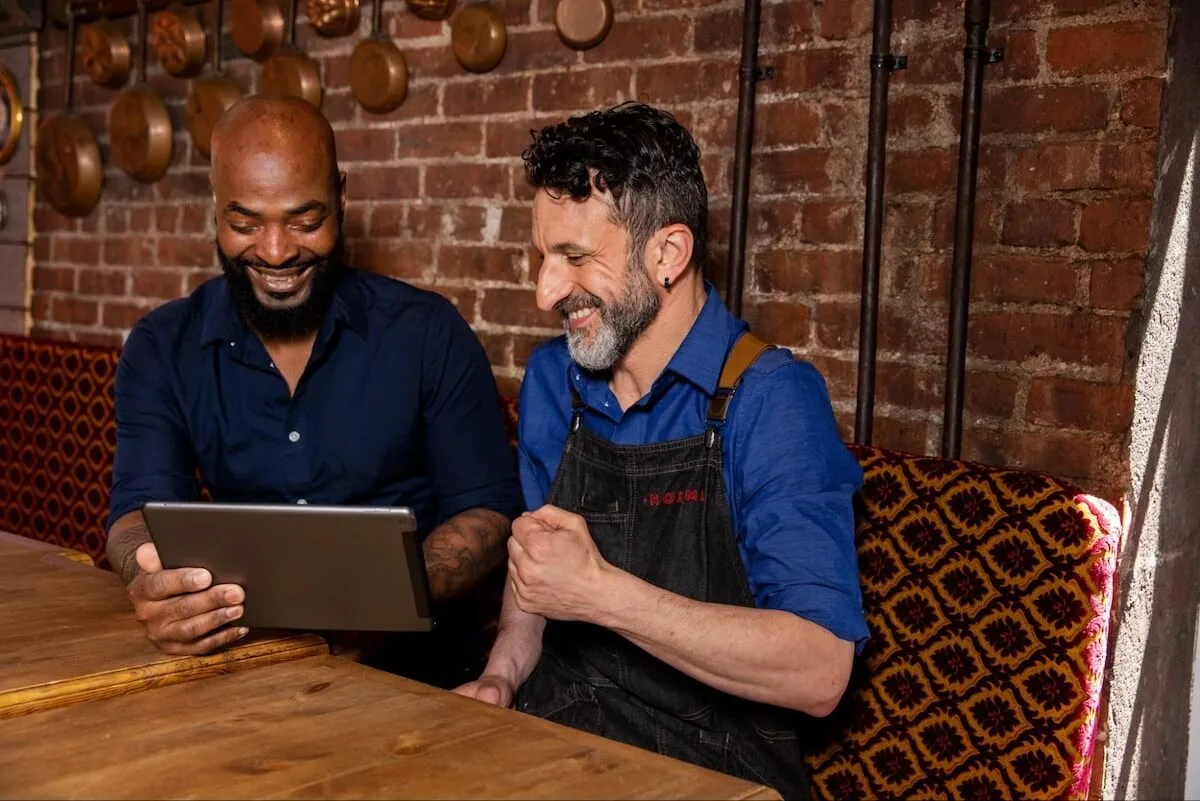How to control food costs in a restaurant: 4 key steps
Skip the article and turn takeaways into action by scheduling a call with our team.
Knowing how to control food costs in a restaurant is one of the most important parts of the business. After all, this is a for-profit industry where a million decisions are made every day. Where should menu prices be set? How much should be served, and what should you serve? Where should the food come from? What benchmarks can be used to determine how well items are doing?
Fear not, dear reader: We’re here to help. We’ll bring theoretical food costs down to reality and help you get a better understanding of just how to make things work smoothly in your restaurant.
1. Understand food cost percentage

To understand how to control food costs, you first have to understand what metrics matter. Generally speaking, most restaurants have a food cost percentage around 30-35% of the cost of the dish, meaning the markup is around 3x the cost of the ingredients. For newbies and those setting up small operations with low overhead, this simple food cost formula is a good way to go without getting into the weeds of math.
But to get the most out of your operation, you’ll need to understand these key metrics to start:
- Cost of goods sold
- Actual food cost
- Ideal food cost
Your cost of goods sold works like this:
Beginning inventory + purchases – ending inventory = COGS
So, if a restaurant had $7,000 of ingredients, purchased an additional $5,000, and the ending inventory value was $3,000, the COGS would be $9,000.
Your actual food cost works like this:
COGS ÷ total food sales = actual food cost
If the same restaurant had sales of $30,000 and their COGS was $9,000, the formula would be $9,000 ÷ 30,000 = 0.3. Multiply that by 100 and your actual food cost was 30%.
Your ideal food cost works like this:
Food cost ÷ food sales = ideal food cost
If a burger and fries at a restaurant cost $2.50 and sold for $10, the formula would be 2.50 ÷ 10 = 0.25. Multiply that again by 100 and you get 25%.
As you can see, there’s a discrepancy between the ideal food cost of 25% and the actual food cost of 30%. A successful restaurant owner would then need to find out why such a discrepancy existed and find ways to rectify it.
The problem could lie in any number of places: portion sizes, food waste and spoilage, rising ingredient costs, and more. This is the time to put on your sleuth hat and find out what’s up.
2. Implement inventory management best practices

Getting your inventory management practices in order is one of the best ways to shore up your bottom line. Overordering, underordering, and spoilage all directly affect your sales and can be prevented with solid practices.
Get inventory tracking software
Restaurant inventory management software has come a long way in recent years, and the restaurant industry is all the better for it. Modern systems sync with your POS system which then syncs with restaurant management software like Yelp Guest Manager to put all the information you need in one place.
New tools can ping you when it’s time to place new orders and can even automate the orders for you. Real-time data entry helps keep track of everything that moves in and out of your storage area. Furthermore, you can rely on inventory management software to forecast and monitor your metrics with regular inventory reports as well as get info on price fluctuations of individual ingredients.
Implement a first-in, first-out (FIFO) system
The FIFO system is an old one, and its age shows its durability. It’s really easy:
Whatever gets ordered first gets used first. Whatever goes into the fridge first gets used first.
You can go a bit deeper with the method. To be specific:
- Organize your storage areas so that older stock is easily accessible
- Label all incoming products with best-by dates
- Regularly rotate stock to keep older items at the front
This is crucial with perishable items, especially costly ones like meat or ingredients that don’t age well like lettuce. Train your staff, retrain them, and then have them train each other. This method is non-negotiable.
Track everything
With your FIFO system and your inventory tracking software, you’ll be able to track everything. Knowing what exactly was used and when can give you keen insight into where there’s waste and room for improvement. Conducting inventory audits can help things from spiraling out of control (which any restaurant manager can tell you is entirely possible at any moment).
Here are some methods to use in your audit:
- Conduct weekly stock counts using your inventory management system
- Compare physical counts with system records to see if there are any discrepancies
- Analyze variances between your actual food cost and your real food cost
- Review your week beginning stock, receipts, transfers, production, and week ending stock
A keen eye can see ways to improve the menu based on your inventory, which we’ll cover next.
3. Optimize your menu for profitability

Menu engineering is a powerful method to evaluate and improve your restaurant menu pricing and design. Analyzing the profitability and popularity of each menu item helps you make informed decisions about pricing, promotion, and placement on the menu.
To begin menu engineering, calculate the food cost and profit margin of each item on your menu. This includes garnishes, oil, seasoning—really, everything involved in a dish, down to the sesame seeds.
Next, calculate the contribution margin for each dish by subtracting the food cost from the item’s menu price. The number you get shows how much each menu item contributes to your overall profits. Your sales data can help you see how much of each item you’ve sold. These numbers will help you break down dishes into one of four categories, which you can make into a visual matrix:
- Stars: High-profit, high popularity items. These should be featured prominently on your menu and promoted across your marketing channels.
- Puzzles: High-profit, low-popularity items. Focus on boosting these items’ sales through better menu placement, appealing descriptions, or server recommendations.
- Workhorses: Low-profit, high-popularity items. Keep these items on the menu placed not particularly prominently and focus on ways to improve the profitability of these dishes.
- Dogs: Low-profit, low-popularity items. Consider ditching these items entirely or minimizing their presence on the menu.
If an item isn’t selling well and you don’t need to have it on your menu for a specific audience like vegans, consider 86’ing it from your kitchen entirely. Shrinking your menu is an easy and cost-effective way to improve a restaurant’s profitability.
Additionally, consider how much time each dish takes to make. Time-consuming dishes mean more labor costs.
We get into more specifics in our menu engineering article, which we recommend reading, since it includes some interesting consumer psychology.
Adjust portion sizes and ingredients
If you consistently see customers walking out with leftovers, your portion sizes are too big. Whether your staff are overserving or you’ve made the menu this way, overly large portions contribute significantly to your restaurant’s food cost.
So, consider adjusting portion sizes and ingredients to improve the profitability of your menu items. For workhorses, for example, try decreasing the portion size slightly while improving the appearance of the dish. These slightly smaller portions can keep customers happy while still realizing lower food costs.
In general, practicing strict portion control in the kitchen can keep food prices in sync with reality, making your recipe cost what you’d intended. Doing so can also improve consistency. You don’t need to be uptight about high-profit ingredients like french fries, but overserving on pricey items like meat can hurt. Check out Five Guys’ strategy of serving a huge amount of fries to keep customers satisfied and you’ll see the point.
To make portion control a standard part of your kitchen, make sure your staff have all they need to accurately measure food items: scales, measuring spoons, and anything else your staff request.
Next, review the cost of ingredients for each menu item and think about modifications to replace costly ingredients without sacrificing quality. You may be able to swap in more budget-friendly ingredients or find more affordable suppliers.
A good way to keep costs down is to swap out seasonal sides and implement a seasonal menu. This ensures that the food you serve is fresh and in season. Doing so means cost savings for restaurateurs while keeping customers’ palates happy with fresh food, which always tastes better.
4. Negotiate with suppliers

Negotiating better prices with suppliers is a direct way to lower your food cost. There are a few ways you can go about doing this.
Build strong relationships with your supplier
Without suppliers, there would be no restaurant business. So, it behooves you to be kind to them and build the best relationship possible. After all, you have a symbiotic relationship: They wouldn’t exist without the restaurant business, either.
This is where interpersonal and business skills mix. Be friendly, pay on time, provide feedback where possible, make suggestions on seasonal offerings, and buy them a beer or comp them a meal once in a while. This may or may not lead to better prices, but it’s always a good idea to develop strong relationships with vendors.
Compare prices from multiple vendors
There’s no law that says you have to stick with one vendor. It’s wise to compare costs across vendors, since some will inevitably have lower prices for some menu items than others. Mixing and matching your vendors may also open up a world of new products to you that you can incorporate into your menu. Making it clear that you shop around can encourage vendors to keep their prices reasonable as well and prevent price gouging.
Consider bulk purchasing options
When you buy in bulk, it’s usually a given that prices will be lower. So, if you use a lot of something—especially items that aren’t perishable like cooking oil—buying in bulk is a wise move. However, you’ll need to ensure you have adequate storage space to do so since a crowded back-of-house isn’t fun for anyone working there.
Joining a food cooperative with multiple other restaurants to make bulk purchases can help keep costs down and foster a sense of camaraderie with your kitchen compatriots. This can be especially valuable for pricier items like meat, seafood, cheese, and wine.
Get it all in order

Keeping the cost of food in check is one of the most important parts of restaurant operations. It can make or break a restaurant’s profitability, and thus can mean the difference between thriving and going under.
Using restaurant management software like Yelp Guest Manager helps keep track of everything that goes on in your restaurant since it syncs with so many other important tools. It also empowers you and your staff to do the best job you can at managing the front-of-house (FOH).
If you want FOH software that does it all—reservation management, table management, third-party syncing, sales forecasting, and more—reach out to us for a free demo of Guest Manager. While you’re keeping costs down, you can get more customers in the door and turn new customers into regulars.